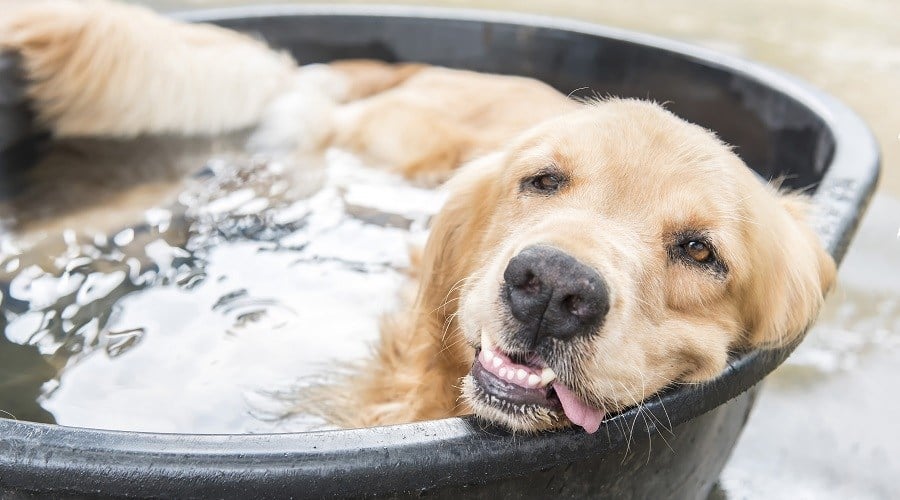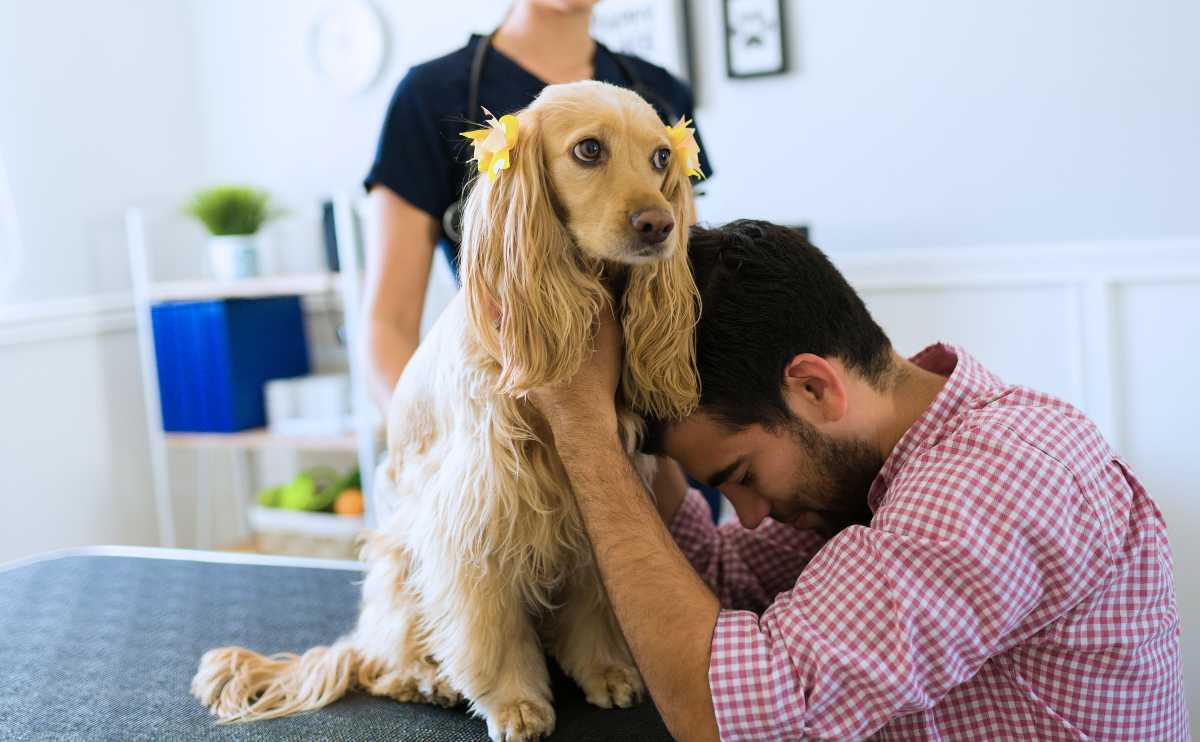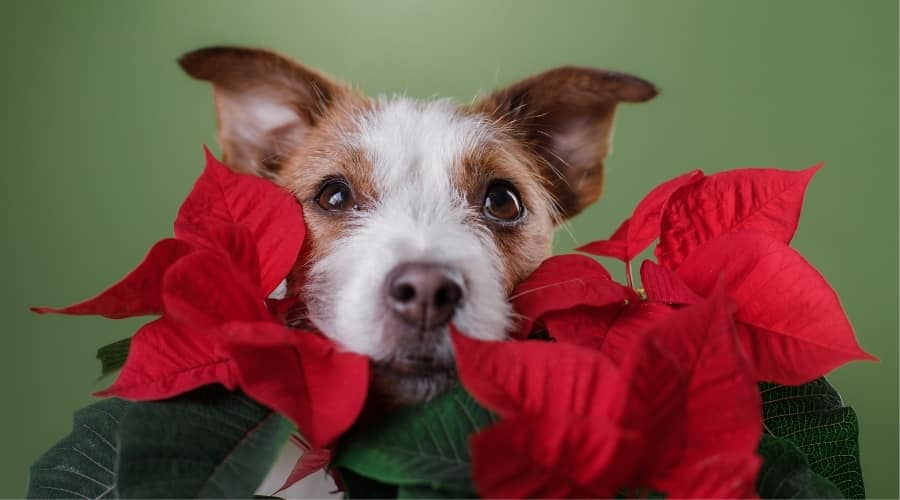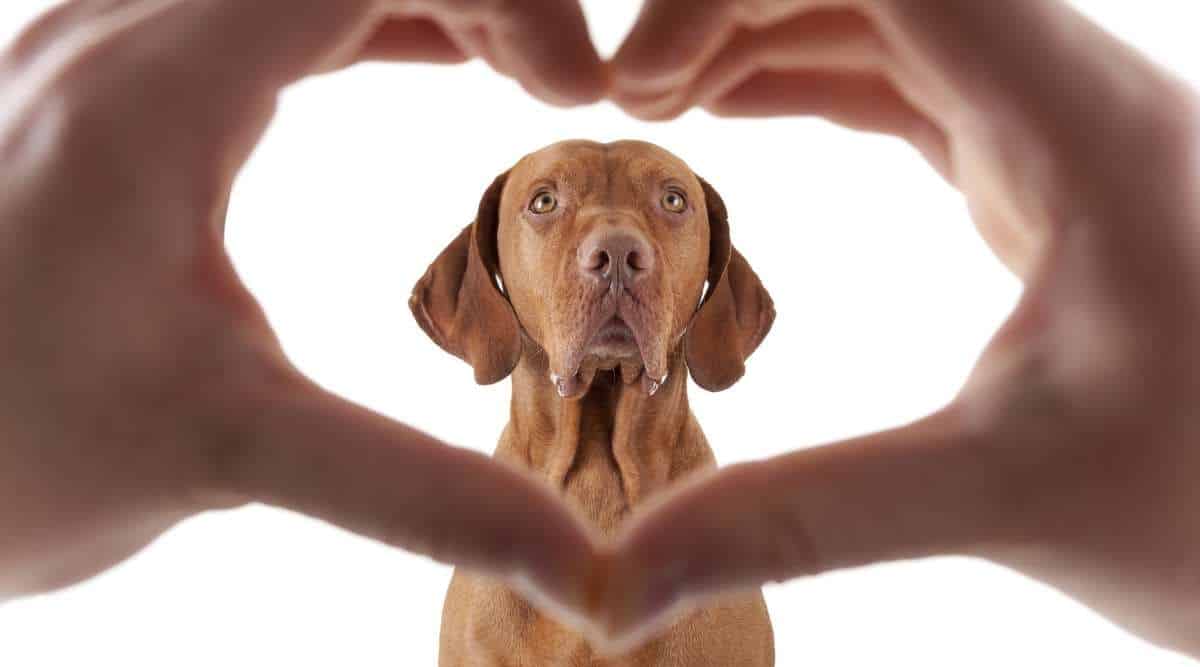Puppy Teething Is Brutal (But Totally Normal) – A Vet Breaks Down The Fixes
When you purchase through links on our site, we may earn a commission. Here’s how it works.
That relentless chewing? It’s not bad behavior. It’s biology. As a veterinarian, I’ve seen just how intense the teething phase can get, both for puppies and their humans.
Table of Contents
In this guide, I’ll walk you through what’s happening inside your pup’s mouth, what’s normal (and what’s not), and which teething toys are actually worth your money.
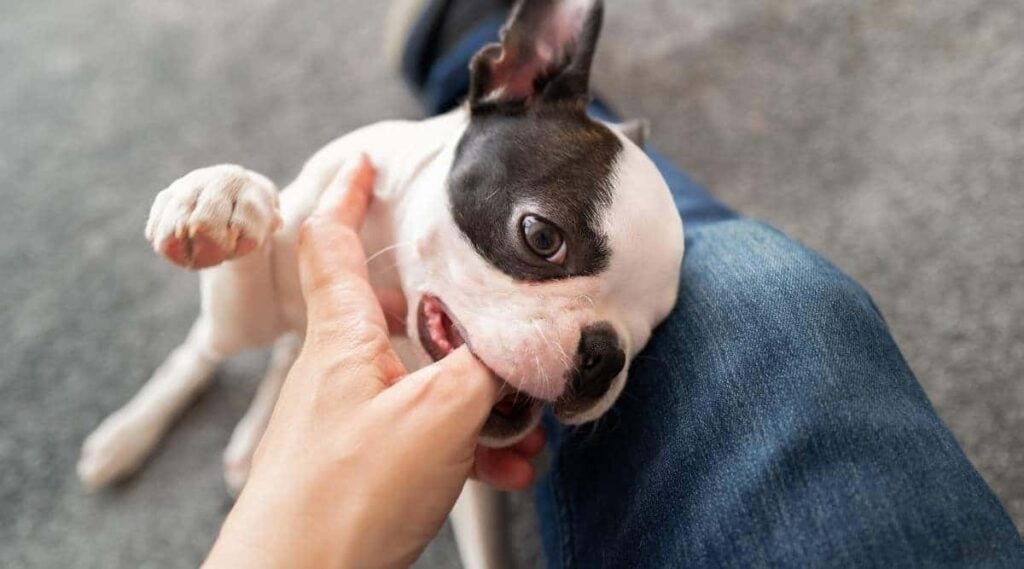
Puppy Teething Symptoms
The first sign of teething for most pups is chewing everything in sight, including your furniture, the skirting boards, and door frames. When they’re not chewing your furniture, they’re usually carrying a toy around like it’s a pacifier.
Some common and easy-to-spot symptoms of teething are:
- Excessive chewing and nibbling
- Small amounts of blood on toys or other things your puppy has chewed on
- Red, sore, or swollen gums
- Drooling
- Eating slowly
- Crying out or whining when chewing or eating
You might also find your dog’s baby teeth lying around, usually somewhere near their toys or an area they have been chewing on. Some pet parents like to keep their pup’s baby teeth as a keepsake.
Sometimes, you might notice that your puppy has some crooked teeth or that the adult teeth come through while baby teeth are still in place. These are common problems that can be treated at the vet. But if you are concerned about your dog’s teeth, it’s always best to get them checked.
Is My Puppy Teething Or Just Being Destructive?
Your pup just tore through a flip-flop like it owed them money. So, is this a behavioral issue, or are those tiny teeth the real culprit?
As a veterinarian, I get this question constantly. Here’s how to tell if teething is driving the chaos:
Classic Signs It’s Teething
- Targeted chewing on harder surfaces (like furniture legs or baseboards)
- Drooling more than usual
- Rubbing their face on carpets or furniture
- Mild bleeding from gums or baby teeth on the floor
- Sudden obsession with cold textures or gnawing toys
- Starts between 12–16 weeks, but can continue into 6–8 months
Other Common Teething Symptoms Vets See That Owners Often Miss
Chewing is the obvious one, but teething affects way more than your pup’s jaw. These are the signs I’ve seen over and over in the clinic that most owners don’t connect to teething right away:
- Ear scratching on one or both sides (because jaw nerves connect to the ears)
- Bad breath (yep, baby teeth + bacteria = a slightly stinky mouth)
- Head shaking or jaw clicking
- Sudden fussiness or whiny behavior with no other illness signs
Think of it like a toddler cutting molars. Your pup can’t tell you what hurts, so they show it instead.
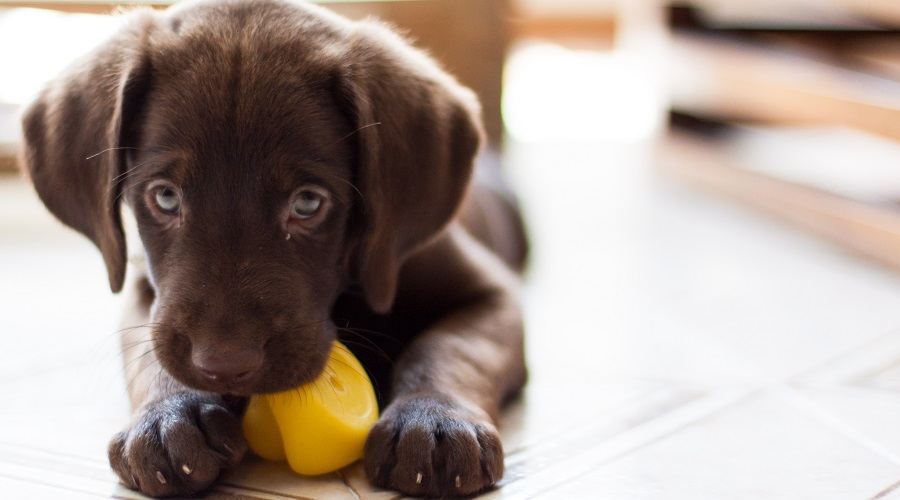
What It’s Not:
- Defiance
- Boredom (though that can overlap)
- “Acting out” on purpose
Treat it like a sped-up, chew-heavy version of baby teething, but with sharper consequences for your shoes. It’s not misbehavior, it’s discomfort.
If your puppy’s chewing is non-stop, intense, or includes signs of pain (yelping, not eating, or swelling), it’s time to talk to your vet. I’ll talk more about red flags later in the guide.
Puppy Teething Schedule
Puppy teeth come in fast, fall out faster, and make a surprising mess in between. Excessive chewing is usually the first and most certain sign of teething.
A lot of pet parents might easily mistake this for naughty or worrying behavior, but it’s a totally natural process that every puppy will go through in their development. Here’s what to expect:
3–6 Weeks: Baby Teeth Come In
Puppies are born without any teeth, and they develop their baby teeth (known as deciduous teeth) around 3 weeks after birth. The incisors (front teeth) appear first, and then the canines, followed by the molars and premolars last.
In total, puppies have 28 deciduous teeth, which should all be present by around 6 weeks of age. You probably won’t notice unless you’re handling them daily (or nursing moms complain first).
12–16 Weeks: Teething Begins In Earnest
The teething process begins when those baby teeth start to fall out, and their permanent adult teeth come through, and this happens as your puppy’s jaw grows.
Puppies start to lose their teeth at around 3-4 months of age. These teeth are so tiny that most pet parents don’t even notice them falling out. Puppies actually swallow most of their baby teeth, as they tend to fall out while they are eating – don’t worry, this is completely harmless and normal.
Sometimes, you might notice a small amount of blood around your pup’s mouth or slightly red/angry-looking gums. This is completely normal, too. As the larger baby teeth start to fall out, you might find these lying around the house, often near toys or items they have been chewing on.
4–6 Months: Adult Teeth Take Over
By 6 months of age, your puppy should have lost all their baby teeth, and you should start to see their permanent adult teeth coming through. In total, dogs have 42 permanent teeth – 12 incisors, 4 canines, 16 premolars, and 10 molars.
6–8 Months: Teething Winds Down
These adult teeth have generally all come through by the time a dog is 9 months old. However, there is no strict puppy teething schedule, which can differ for individual dogs. The teething stage can continue until a dog is 9-12 months old.
Our Personal Experience With Puppy Teething
When I adopted my Labrador mix, Bear, I had no idea what I was signing up for in the chewing department. I’d had dogs before, but none with this level of jaw dedication. Bear wasn’t just a chewer. He was a one-dog demolition crew.
At first, it was the usual puppy stuff. Shoes. Socks. A corner of a throw pillow. But once his adult teeth started coming in, he leveled up. One day, I came home to find that he had completely dismantled our couch.
I learned quickly that distraction was my only hope. I stocked up on KONG toys, those thick, rubbery tanks of the toy world. I’d stuff them with peanut butter, freeze them solid, and hand them over like peace offerings.
The worst of his teething phase hit between four and six months. But even after that, chewing remained one of Bear’s greatest joys. To him, it wasn’t just a habit. It was a lifestyle.
– Danielle DeGroot, Rescue Dog & Mom Canine Journal Writer
Vet-Approved Toys & Soothing Tricks
Let’s be clear: you can’t stop puppy teething. But you can make it way easier (for both of you). As a vet, these are the toys and tricks I actually recommend to clients who are one chewed charging cable away from losing it.
Top 5 Teething Relief Options (That Actually Work)
Chewing, especially on cold or hard items, is actually soothing for your puppy but can be quite destructive. Here are my top 5 teething options for puppies:
- Frozen Kongs. Fill with peanut butter or plain Greek yogurt, freeze, and watch your pup go quiet for 20+ minutes. The cold numbs sore gums.
- Frozen Carrots or Banana Slices. A natural, vet-safe treat that doubles as a soothing chew.
- Puppy Teething Rings or Puppy Chews. Soft enough for sore gums, durable enough to last. Look for toys labeled “for teething puppies.”
- Chilled Wet Washcloth (Supervised Only!). Twist it, soak it, freeze it, and give it for 5–10 minutes under your watch.
- Lick Mats with Soft Spreads. Helps redirect anxious energy and encourages licking over gnawing. Dog-safe peanut butter is always a huge win.
The trick is combining cold + texture. Cold reduces inflammation, while textured toys give puppies what they crave: pressure relief on those erupting teeth.
Best Toys For Teething
Choosing the right toys for your teething puppy can be overwhelming, with so many different types on the market. We have a dedicated guide on the best toys for teething puppies, with more tips on getting through this tough stage.
What To Avoid
- Hard bones, antlers, or hooves – too rigid, can fracture baby teeth
- Rawhide – digestion risks + choking hazard
- Stuffed toys with squeakers – high risk of shredding and swallowing
- Tennis balls – rough felt wears down enamel
Other Ways To Help Your Teething Puppy
So, your puppy has started teething, and you’re probably wondering what you can do to help your fur baby feel more comfortable and get through this stage with ease. The good news is there are lots of simple and easy tips that can help you and your pup breeze through the teething stage.
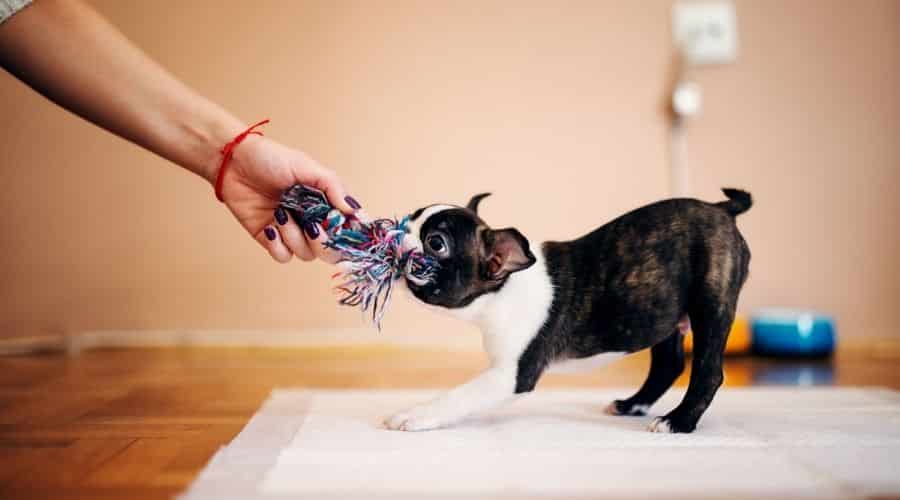
Offer Your Puppy Lots Of Toys
Teething puppies are prone to excessively chewing, nibbling, or biting, and it’s much better for them to chew on suitable dog-friendly toys than potentially dangerous (or valuable) items in your home.
Make sure that your dog has a good selection of safe and suitable toys to help them ease their pain. There is a huge range of products on the market offering everything from soft toys for dogs with all their baby teeth to harder toys for those with their adult teeth coming through. Some toys can be frozen to soothe sore gums, and you can also offer tasty frozen treats.
The most important thing is that your pup’s toys are durable and don’t have any loose parts that could potentially come off and be swallowed. You also need to make sure that any toys you offer your pup are suitable for their size so they don’t choke.
Puppy-Proof Your Home
When your puppy is teething and wanting to chew on everything it can get its teeth on, you need to be extra careful with items lying around your home that could be dangerous. Using a dog gate can be a lifesaver, literally.
Make sure any loose wires are secured and inaccessible. Keep any toxic plants well out of their reach, as well as shoes or items of clothing with loose parts. Bitter sprays can also be useful as they create a nasty taste that your pup hates and discourage them from chewing in that area.
Provide Plenty Of Stimulation
Distraction is often key when it comes to preventing chewing and giving your dog some relief from their discomfort. It is really important to keep them occupied with enough exercise, as well as mental stimulation from games and socializing with family and other pets.
Training
Your puppy needs to know which items are off-limits when it comes to chewing. The only thing they should be chewing on is their toys.
Positive reinforcement and high-quality rewards are the most effective techniques. You should never punish your dog for bad behavior. Simple commands and giving them their own toy followed by a reward is the best way to encourage good behavior.
If you aren’t sure, get in touch with a registered trainer or behaviorist for support and advice.
When It’s Not Just Teething – 7 Red Flags To Watch For
Most teething signs are harmless, but not all of them. As a vet, I always tell puppy parents: if something feels “off,” trust your gut. Here’s how to tell the difference between normal teething and something more serious.
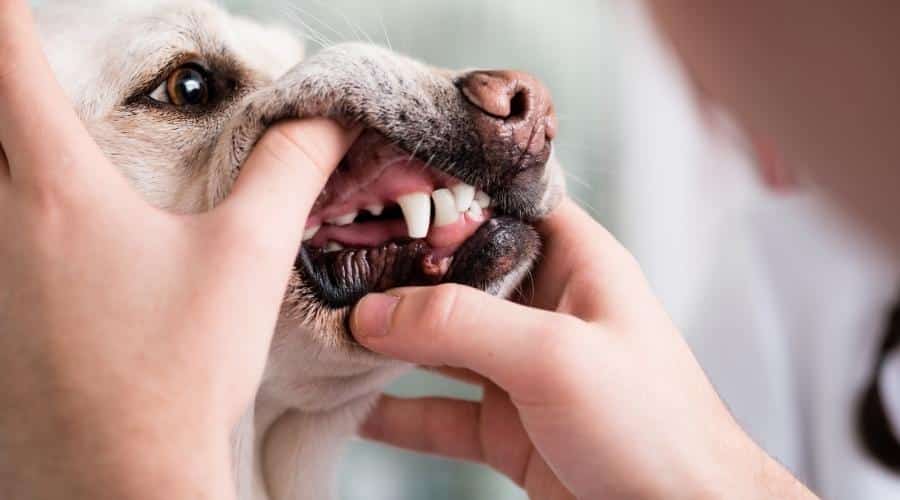
1. Second Set Of Teeth
Occasionally, the adult teeth come through before a baby tooth has fallen out, and you might notice that your puppy looks like they have 2 sets of teeth.
This is a common problem with no obvious cause, but it can be quite uncomfortable for your dog. Usually, the retained baby teeth need to be removed at the vet under sedation or general anesthetic and are sometimes extracted at the same time as neutering.
2. Crooked And Broken Teeth
Crooked or broken teeth are also common and can be quite painful. Teeth often break when dogs are chewing on hard toys or surfaces or even eating bones. Often, these broken teeth need to be removed, but there are dental procedures available to mend broken teeth at some veterinary clinics.
Certain breeds, such as Boxers, Bulldogs, Shih Tzu’s, and Pugs, are predisposed to developing an under or overbite (malocclusion). If you notice anything unusual about your puppy’s teeth during the teething stage, it’s always best to get it checked by the vet, as there are lots of simple treatment options available.
3. Excessive Bleeding From The Mouth
A tiny bit of blood on a chew toy is normal during teething, especially when baby teeth are falling out. But if you notice consistent bleeding, visible blood pooling in the mouth, or bleeding that doesn’t stop after a few minutes, it could signal trauma to the gums, a fractured tooth, or a deeper oral injury.
This needs prompt vet attention.
4. Facial Swelling
Mild puffiness can be hard to spot under puppy fluff, but any noticeable swelling around the muzzle, jawline, or under the eyes can mean trouble. It may be caused by a tooth root infection, a lodged foreign object, or even a mild allergic reaction.
It’s always better to have swelling checked early.
5. Strong, Foul Odor From The Mouth
While puppy breath has a reputation of its own, it shouldn’t smell rotten or sour. A very strong or unusually bad odor could be a sign of gum infection, abscesses, or trapped food and bacteria under a retained baby tooth.
This kind of smell is your puppy’s way of telling you something’s not right.
6. Loss Of Appetite Or Dropping Food
If your puppy suddenly becomes picky, stops eating, or drops kibble mid-chew, they might be experiencing pain in their mouth. This could be from inflamed gums, cracked teeth, or something lodged where it shouldn’t be.
Puppies should eat eagerly, even during teething, so any change in eating behavior is worth a closer look.
7. Pawing At The Face With Signs Of Distress
Some discomfort is expected during teething, but if your puppy is pawing obsessively at their mouth, whining, hiding, or acting unusually quiet or tired, it could point to deeper pain. This could be from an infected tooth, jaw injury, or even a foreign object stuck between the gums or teeth.
3 Puppy Teething Mistakes Vets See Every Week
You’d be surprised how many puppy teething issues often come down to the same three mistakes. I see them in the clinic all the time, and they’re totally fixable once you know what to watch for.
1. Giving The Wrong Chew Toys
The mistake: Hard bones, real antlers, or even cheap pet-store “teething” toys that aren’t designed for puppies.
Why it matters: Baby teeth are fragile. Chewing on anything too hard can cause fractures, tooth root damage, or even lead to extractions later.
What to do instead: Stick to toys labeled specifically for teething puppies. Soft rubber, nylon, and frozen options are best. If you can’t indent the toy with your fingernail, it’s too hard for their teeth.
2. Letting Chewing Happen Unsupervised
The mistake: Leaving your pup alone with plush toys, cords, or anything they “seem to like.”
Why it matters: Teething puppies will find something to chew, whether it’s safe or not. I’ve treated cases involving swallowed squeakers, electrical burns, and even chewed-off cabinet corners.
What to do instead: Puppy-proof your space like you would for a toddler. Keep chew-approved toys within reach and rotate them to keep things fresh and interesting.
3. Waiting Too Long On Dental Issues
The mistake: Assuming “it’s just teething” when something’s off, like persistent bad breath, retained teeth, or chewing that lasts past 8 months.
Why it matters: Dental issues that start during teething can shape your pup’s bite for life. I’ve seen adult teeth removed because they grew in crooked because baby teeth didn’t fall out when they should have.
What to do instead: Ask your vet to do a dental check at your puppy’s 6-month wellness visit. It’s quick, and it can save your dog a lot of pain (and you a lot of money) down the road.
A Vet’s Final Word On Surviving The Teething Phase
As a veterinarian, I’ve seen hundreds of puppies (and their humans) ride the rollercoaster of teething, and I’ll tell you this: you’re not doing anything wrong.
Puppy teething is one of those phases that feels endless while you’re in it, but it will pass. The chewing, the drooling, the carpet digging, the random tooth on the floor. All of it is part of a normal, healthy process.
There is no set schedule for puppy teething, but generally, puppies start losing their teeth at 3-4 months of age and have all their adult teeth by 9 months.
You can help ease your pup’s discomfort and support them through this stage by offering plenty of suitable toys, cold things to chew on, and discouraging biting behavior. If you’re ever unsure, ask your vet. We’d much rather answer a “just-in-case” question than see your pup in pain later.
You’ve got this. And your pup? They’ll be all smiles soon, with a full set of adult teeth and a little less chaos in their chomp.
Puppy Teething FAQs
Still have questions? You’re not alone. These are the ones I most often hear about regarding the puppy teething schedule and whether it will ever end. If you have a question you don’t see below, ask us yours in the comments, and we’ll find the answers.
Can Teething Make My Puppy Act Out Or Ignore Training?
Yes. Teething discomfort can make puppies more irritable, distracted, and mouthy. It doesn’t mean your training isn’t working. It just means they’re uncomfortable. Stick with short, calm sessions and redirect biting with toys.
Is It Normal For A Teething Puppy’s Mouth To Bleed?
A small amount of blood on a toy or after chewing is normal. But if you see dripping blood, blood pooling in the mouth, or bleeding that doesn’t stop quickly, call your vet.
What Should I Not Give My Puppy To Chew On?
Avoid hard bones, antlers, hooves, sticks, rawhide, and anything they can shred and swallow (like stuffed toys with squeakers). If you can’t press a fingernail into it, it’s too hard.
What If My Puppy’s Baby Teeth Aren’t Falling Out?
This is called a retained deciduous tooth, and it’s pretty common, especially in small breeds. A vet may need to remove it to prevent crowding or misalignment.
When Do Puppies Stop Teething?
Most puppies finish teething between 6 and 8 months. After that, chewing should calm down. But it can become a habit if not redirected early.
Should I Brush My Puppy’s Teeth While They’re Still Teething?
Yes, but gently. Use a soft-bristle toothbrush and dog-safe toothpaste, and introduce teeth brushing slowly so they associate it with positive experiences. Avoid brushing over very sore or bleeding gums.
Next Steps For A Healthy, Happy Pup
Teething is just one part of raising a healthy dog. There’s so much more to set your pup up for success. Make sure you’re feeding a high-quality puppy diet that supports growth, and learn how to transition to adult food at the right time.
Now’s also the perfect time to plan for year-round parasite prevention and explore pet insurance to cover future surprise vet visits. Your puppy’s best life starts with the right care.
Got a teething horror story or a toy that saved your sanity? Share your experience in the comments. We’d love to hear how you and your pup survived the chew phase!
